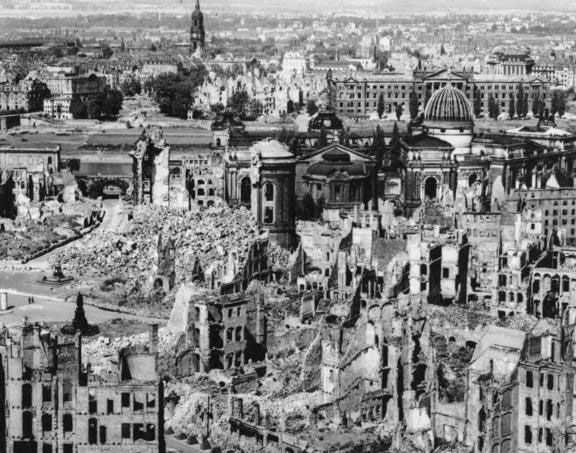FEBRUARY 1945 Dresden Bombing

DresdenAfter the Raids
Between February 13 and 15 the USAF and RAF launched a massive raid on Dresden. The British launched 722 bombers and Americans 527. Part of the ordinance was incendiary bombs that resulted in a firestorm breaking out. It destroyed 6.5 Kilometers of city and killed as many as 25,000 people. The bombing which was justified by the factories and communications centers in the city has been controversial until this day.While it was clear that it was only a matter of time until the Allies prevailed over the Germans, they continued to resist . Allied intelligence had concluded that if the Russians who were already in the Eastern parts of Germany could continue their offensive the war could be over by April, but if the Germans managed to get reinforcements from the West they might be able to hold out the Allies until November. It thus became a priority to disrupt movement of German troops and civilians. It was decided that one of the ways to do that was to bomb the major German cities, to disrupt transportation and lower morale of the German people.
Dresden which was the seventh largest city in Germany had been largely unaffected by bombing. Furthermore Allied intelligence had identified as many as 500 factories and workshops being used to produce war materials in the city. On the night of February 13th the first raid was launched on Dresden. The British Air force sent 270 Lancaster bombers carrying 500 tons of high explosive and 375 tons of incendiary bombs to bomb the city. Three hours later another 575 British planes attacked the city. The next morning the US air force bombed with another 316 B17 Flying Fortress which dropped another 771 tons of bombs on the city.
The combined incendiary and regular bombs created a firestone in the city center. Thousands were burned alive. It is estimated that 25,000 people died in the bombing. At the time the German government claimed that as many as 500,000 had died.
 >
>